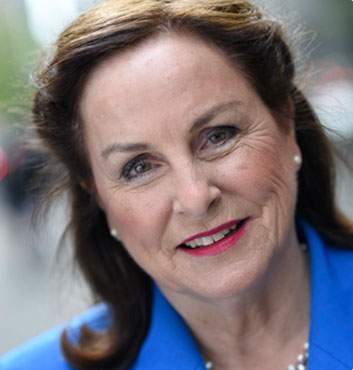Living At Home, But Going To Therapy
There are so many types of alcohol and drug treatment options, all claiming to “fix” your troubled child: the ones that allow your child to live at home, go to school, etc. called outpatient, intensive outpatient, and partial hospital programs. Then, there’s high-intensity in-patient treatment provided in specialty units of hospitals or medical clinics of hospitals offering both detox and rehabilitation services and medications for addiction (MAT). There’s individual counseling or one-on-one therapy and group therapy, usually six to ten participants with two or more counselors. There are recovery high schools in cities like Boston, Twelve-Step meetings like AA and NA, and non-Twelve Step meetings like SMART (Self-Management and Recovery Training). I can’t comment on these choices as many didn’t apply to my role as the mother of a son with substance abuse disorder except that if you are going to send your child to a psychiatrist, be sure that he/she/they specialize in addiction. Otherwise, whether your child is in a drug-dependent stage or full-blown addiction, he will try to manipulate that doctor into giving him more prescription drugs than he really needs. A teen whose prefrontal cortex is not developed may have problems adhering to a strict regimen of prescriptive drugs, but an addiction doctor should know when your child is “doctor shopping” or abusing the pills.
I wish I had known about CRAFT or Community Reinforcement and Family Training. Developed in the 1970’s, it’s not a Twelve -Step Program. It is motivational and rewards good behavior of the participant. If the substance abuser does not want to attend the training, the parent or the concerned significant others can, It teaches communication skills and models good behavior. According to The American Psychological Association, it has a 64% success rate.
Out-of-Town Treatment Options
As drug addiction affects the whole family, many parents may want to send their kids away to “emotional growth” schools, usually suggested by educational consultants. At these schools, you get a regular education, credits for college and group therapy. My son went to one for eighteen months. It was sequestered in the mountains of Georgia, but not far from The Appalachian Trail. When my son arrived, he was strip searched as he was after returning home two times from school vacations. He was not allowed to call home, but wrote letters that were read by the counselors. There were a few Family Weeks when you could visit. It was a “lockdown” school but had a few field trips and approved places to volunteer. There was no internet or music allowed. It worked on peer pressure. If one person broke the rules, then the group was punished. For example, doing push-ups on hot tarmac.
This so-called therapeutic boarding school was costly and operated between 1994 and 2011. Several parents filed a class action lawsuit in 2006 against the school, after Graham had graduated. He had told me that there were court-ordered kids at the school. I thought he was just trying to make himself look angelic, but in hindsight, he was telling the truth. HLA’s reluctance to reject court-ordered, disturbed and violent students stems from the fact that it’s highly profitable to admit such students. Enrollment plummeted, and it couldn’t get accreditation.
Rehabs are also sequestered in somewhat remote areas. Patients are not allowed to call home while they are there. They are divided into groups according to why they are at the facility. In twenty-eight days, you get detox and group therapy. There’s Family Week, homework for the parent and patient, and a followup plan for the patient with lists of doctors, meetings for wherever the patient is next going to live when he exits the rehab. As addiction is a chronic relapsing disease, it is best to stay longer than the month. Drug or alcohol addiction needs to be managed long-term. Out of the six in Graham’s original group, three are now dead. Many don’t remain sober after the first try at rehab unless they are older and more mature.
Sober living or half-way houses are for people who have been to rehab and need the support of living in a somewhat supervised setting. The residents are usually driven to doctor’s appointments, gyms, and Twelve Step meetings if they are not at the house itself. They may take courses nearby or develop job skills, but they are free to move out when they want.
Utah Isn’t So Squeaky Clean
Paris Hilton’s alma mater Provo Canyon School in Utah was sold in 2000 thanks to her revelations as well as other former students. She has made a documentary “This is Paris.” about the school. While she was there, she was abused, put into solitary confinement, and given psychotropic medicines against her will. She was punished by staring at a wall all day and getting yelled at by the staff. Her tagline is#breakcodesilence is a social movement organized by activists and survivors of institutional child abuse to raise awareness of the problems in the Troubled Teen Industry and the need to reform.
Wilderness Programs For Troubled Youth
Wilderness programs may be good for team building, problem solving, getting your child away from drug dealers. For your kids, they could enjoy being in nature, hiking, but there have been incidents where these campers have drown, have had heatstroke while pushed to exertion and not given proper medical attention.
There are no federal laws governing these wilderness programs. They are private and for profit residential treatment programs. For these “boot camps,” and wilderness programs, not all states demand credentials. Like the therapeutic boarding schools, many have shut down.
Where to Turm
You can seek guidance from the National Institute on Alcohol Abuse and Drug treatment. Use the navigator on the National Institute on Drug Abuse Section for patients and families.

Wesley Cullen Davidson
Wesley Cullen Davidson is an award-winning freelance writer and journalist specializing in parenting. Currently, she is targeting her writing about recovery to parents whose children have substance abuse disorders.